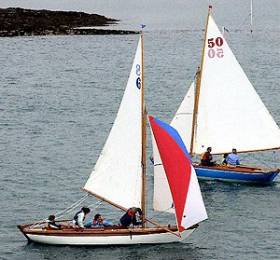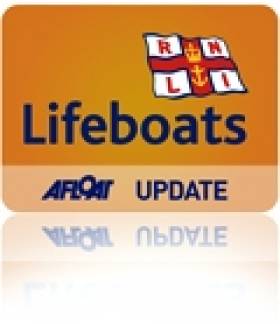Displaying items by tag: Trearddur Bay
Trearddur Bay’s Myths & Seabird Half Raters To Cross Irish Sea For Dun Laoghaire Regatta
#VDLR - Trearddur Bay Sailing Club brings its centenary year celebrations to Dublin Bay this summer as a number of its Myth class and Seabird Half Raters will be making the trip across the Irish Sea for the Volvo Dun Laoghaire Regatta.
Myths are one of the original classes raced since the Holyhead club’s inception in 1919, with three of the 14-footers joining a fleet of five 12-foot Insects — three of the latter, the first boats built for the club, having been restored for the centenary.
While no original Myths remain from those days, the open boat class has seen a resurgence in recent years, and a modern Myth fleet at Trearddur Bay has grown to over 40 vessels.
Designed along the lines of the International 14 but inspired by what the club calls “a hotch-potch of ideas”, Myths are distinguished as much by their tight specification as their turkey red sails and either white-painted or varnished hulls that comprise five different types of wood.
With the Myth class now in its 99th year, its lasting legacy is no doubt also connected to the boat’s particular suitability to the environment of Trearddur Bay — not to mention the absence of an age barrier when it comes to racing, as young and old can compete on equal terms.
They are matched by the Seabird Half Rater — which was adopted in 1922 and is one of the oldest one-designs still sailing in British waters — at a club which currently has a strong dinghy scene with Mirrors, Fevas and Optimists among a full member list of more than 1,100 that sails every August.
Due to the uniquely short season, Trearddur Bay’s members regularly sail and race at other clubs, so some of the contingent will likely be no strangers to the waters of Dublin Bay as they join the likes of Olympic medalist Mike McIntyre at the biennial regatta — and Ireland’s largest sailing event — from 11-14 July.
The entry form for the Volvo Dun Laoghaire Regatta 2019 is available HERE. Early bird entry fees are available up to Sunday 31 March.
RNLI Receives Thank-You After Cow Rescued from Irish Sea
#LIFEBOATS - The volunteer lifeboat crew at Trearddur Bay in Anglesey, north Wales have received a kind donation and a thank-you card from the owner of Daisy, a cow recently rescued after falling from a cliff into the Irish Sea.
Danielle Bosustow, aged eight, was so touched that the crew had rescued her pet she put pen to paper to thank them. Her thank you card reads: "Thank you so much for your help rescuing my cow Daisy. I am so happy to see her again."
Along with the thank you card was a kind donation from Danielle’s grandfather, a local farmer who visited the station to show his gratitude to the RNLI.
The volunteer crew sprung into action on 22 October last, following reports that a cow had fallen from a cliff at Porthdafarch.
The lifeboat launched and with the help of the local farmer, Daisy was located and towed to safety using a bridle. She was taken to a bay close by where she could safely reach dry land.
Alf Pritchard, press officer for Trearddur Bay RNLI said: "We were shown some photographs which were taken after Daisy’s ordeal and it was good to see she is none the worse for her experience.
"It’s so nice when people come back to let you know that what you have done is appreciated. As a charity, the RNLI also very much appreciates the donation."

























































